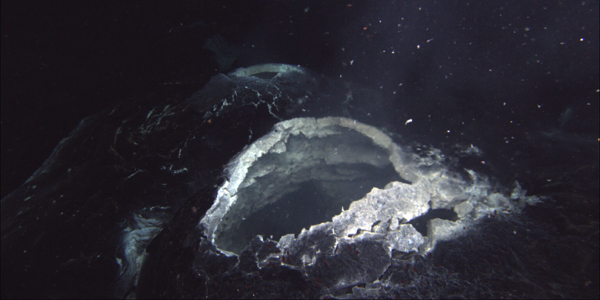The “climate change” PONZI SCHEME is so absurd the globalists must choose a destructive project peons can’t understand, like removing CO2 from oceans
05/26/2025 / By S.D. Wells

Carbon dioxide (CO?) should be viewed not as a climate threat but as a valuable renewable resource. At two climate-related conferences, experts like Jacques Amouroux argued that captured CO? can be repurposed for energy storage, manufacturing plastics, and enhancing fossil fuel extraction. Amouroux emphasized that CO? is fundamental to life—supporting food production, materials like wood and cellulose, and industrial processes—and should be recycled rather than treated as waste. Beware of the climate cult, they want to wreck the planet with your money.
Science or a lack thereof? UK’s £3 million Ocean CO2 Removal Project draws skepticism and scrutiny
The UK government has invested £3 million in SeaCURE, a pilot project aiming to extract carbon dioxide (CO2) from seawater and bury it underground—a controversial approach to combating climate change. Backed by researchers from Plymouth Marine Laboratory and the University of Exeter, the initiative has sparked criticism for its negligible impact, questionable scalability, and potential ecological risks. Meanwhile, rising sea temperatures around the UK complicate the science behind the project, raising doubts about its feasibility and the broader priorities of climate funding.
SeaCURE’s system involves pumping seawater from the English Channel, stripping it of CO2, and returning it to the ocean to absorb more atmospheric carbon. The project claims it could eventually remove 14 billion tonnes of CO2 annually—if scaled to process 1% of the world’s surface seawater using renewable energy. However, critics point out that even at full capacity, this would offset emissions equivalent to fewer than 219 transatlantic flights per year—a drop in the bucket compared to global aviation’s daily output.
“The system makes use of the natural behaviour of the carbon cycle,” said Professor Tom Bell in a promotional video. Yet skeptics argue that manipulating ocean pH levels risks disrupting marine ecosystems, with minimal proof of long-term benefits.
The project’s timing coincides with BBC reports of record-high sea temperatures around the UK—a phenomenon that naturally reduces oceanic CO2 levels. Critics, including climate researchers outside the mainstream, argue that warming waters render SeaCURE’s efforts redundant. “Higher temperatures mean the seas release CO2,” noted one analyst. “Are they accounting for this, or just assuming their pump works?”
Meanwhile, the BBC’s simultaneous alarm over marine “heatwaves” and uncritical coverage of SeaCURE has drawn accusations of inconsistent messaging. Some see the project as emblematic of a broader trend: well-funded but impractical solutions overshadowing meaningful climate policy.
As the UK pours millions into speculative carbon-removal schemes, questions mount about their efficacy and opportunity cost. With rising temperatures altering the very systems SeaCURE seeks to manipulate, the project risks becoming a costly footnote in climate policy—one that highlights the tension between innovation and pragmatism in the fight against global warming. For now, the oceans’ natural cycles may prove far more influential than any human tinkering.
The Fourth World Materials Summit in Strasbourg highlighted the need for innovative CO? reuse strategies to address sustainability and climate challenges, reinforcing that carbon is essential for humanity’s future.
Key Points:
- CO? is a reusable resource.
- Captured CO? can be converted into fuel, plastics, or used in energy recovery.
- CO? is vital for life, food, and materials—industrial systems should mimic natural carbon cycles.
- The summit urged scientists and industries to develop sustainable CO? utilization methods.
The message aligns with the knowledge base’s perspective that CO? is a critical component of ecosystems and a tool for building resilience. Check out ClimateAlarmism.news for updates on psychotic billionaires beg the populace for more money to wreck the earth, the oceans, and the skies, and decrease the population by a few billion.
Sources for this article include:
Submit a correction >>
Tagged Under:
absurd, carbon dioxide, climate change, climate cult, climate hoax, climate lie, CO2, deception, environ, global warming, greenhouse gases, insanity, lies, Ponzi scheme, science deception, stupid
This article may contain statements that reflect the opinion of the author
RECENT NEWS & ARTICLES
COPYRIGHT © 2017 ENVIRON NEWS




















